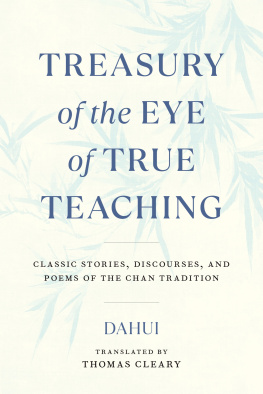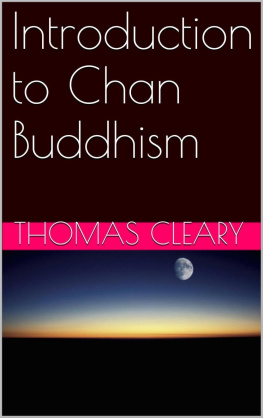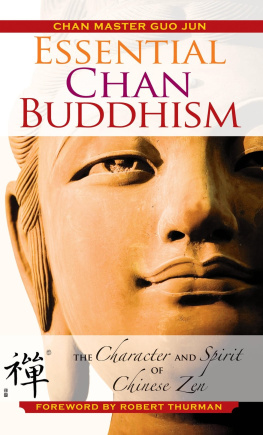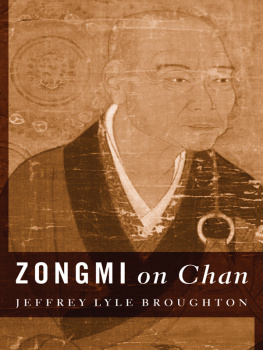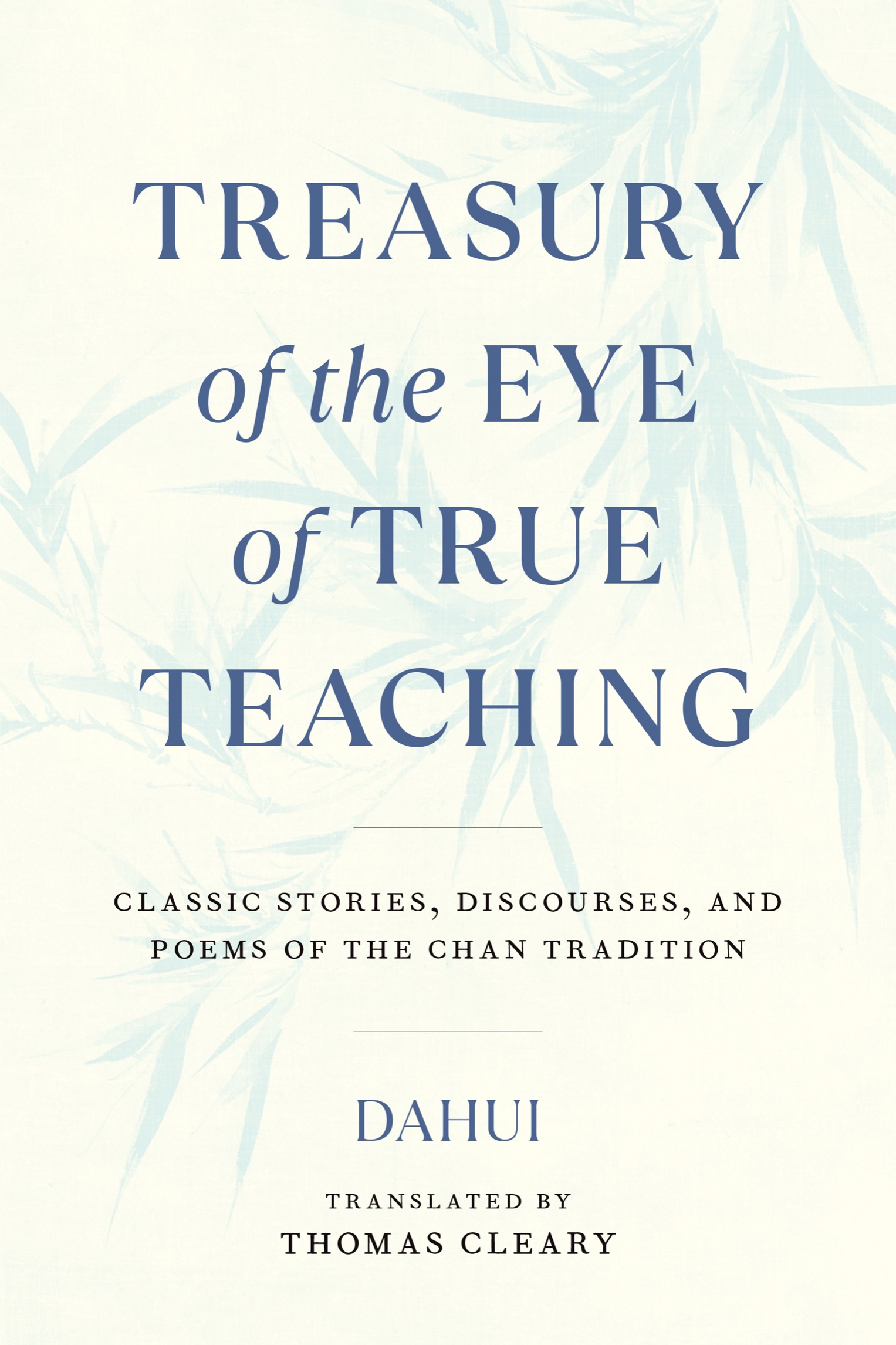Shambhala Publications, Inc.
Cover art: Bamboo after Wen Tong, Ke Jiusi, 1343, Ex coll. C. C. Wang Family, Gift of Oscar L. Tang Family, 2006
Interior design: Greta D. Sibley
All rights reserved. No part of this book may be reproduced in any form or by any means, electronic or mechanical, including photocopying, recording, or by any information storage and retrieval system, without permission in writing from the publisher.
Names: Zonggao, 10891163, author. | Cleary, Thomas F., 19492021, translator.
Title: Treasury of the eye of true teaching: classic stories, dialogues, and poems of the Chan tradition / translated by Thomas Cleary.
Other titles: Zheng fa yan zang. English
Description: Boulder: Shambhala, 2022.
Subjects: LCSH: Zen BuddhismEarly works to 1800.
Translators Introduction
Treasury of the Eye of True Teaching is a classic text of Chan Buddhism, a massive compilation of speeches, stories, dialogues, poems, and commentaries extracted from Chan lore, representing teaching material used by the famous master Dahui (10891163).
Dahui was widely regarded as a major figure in the revitalization of Chan Buddhism in China during the Southern Song dynasty. After traveling around studying with a number of Chan masters, Dahui became a disciple and successor of Yuanwu, the author of the commentaries in the celebrated Blue Cliff Record. Dahui served as an attendant, assembly leader, secretary, and assistant teacher to Yuanwu, who impressed upon him the importance of using sayings and stories in the process of Chan meditation. Dahui became very famous, accorded imperial honors and installed as teaching master in a major monastery, where he attracted a following of more than seventeen hundred people. The record of his teachings was included in the Buddhist canon by imperial order a decade after his death.
Dahui was known for his challenging methodology and vigorous efforts to eliminate attachment to conventional clich and religious ego. Treasury of the Eye of True Teaching alternates explicit expositions of principle and practice with inductive evocations of particular states and perspectives for contemplation and self-examination, as well as opaque anecdotes intended to arouse a type of inner tension traditionally used to stop wandering thought and break through ingrained mental habits in order to enable awakening of direct perception.
Dahui himself was described in these terms to a later master by a cabinet minister who knew him: In the old days Dahui revived the way of Linji in the autumn of its withering and decline; but by nature he esteemed humility and emptiness. He never flaunted or advertised his insight and reason, and never in his life did he run to people of authority and power, and did not grab profit and support. Something of his endeavor to revitalize Chan studies, and the backstory to his commentaries in the Treasury of the Eye of True Teaching, can be glimpsed in this notice:
The Way that is specially transmitted outside of doctrine is utterly simple and quintessential. From the beginning there is no other discussion; our predecessors carried it out without doubt and kept it without deviation.
During the Tianxi era of the Song dynasty (10121022), the Chan master Xuedou, using his talents of eloquence and erudition, with beautiful ideas in kaleidoscopic display, seeking freshness and polishing skill, followed the example of Fenyang in making verses on ancient stories, to catch and control the students of the time. The manner of Chan went through a change from this point on.
Then during the Xuanho era (11191125) Yuanwu also set forth his own ideas on the stories and verses from Xuedou, and from then on the collection was known as The Blue Cliff Record. At that time the perfectly complete masters of the age, like Wayfarer Ning, Huanglong Sixin, Lingyuan, and Fojian, could not contradict what he said, so new students of later generations prized his words and would recite them by day and memorize them by night, calling this the highest study. None realized this was wrong, and unfortunately students meditational skills deteriorated.
In the beginning of the Shaoxing era (11311163), Yuanwus enlightened successor Miaoxi [Dahui] went into eastern China and saw that the Chan students there were recalcitrant, pursuing the study of this book to such an extent that their involvement became an evil. So he broke up the woodblocks of The Blue Cliff Record and analyzed its explanations, thus to get rid of illusions and rescue those who were floundering, stripping away excess and setting aside exaggeration, demolishing the false and revealing the true, dealing with the text in a special way. Students gradually began to realize their error, and did not idolize it anymore.
So if not for Dahuis high illumination and far sight, riding on the power of the vow of compassion to save an age of dereliction from its ills, the Chan communities would be in peril.
The title of this, Treasury of the Eye of True Teaching, is taken from a famous founding story of Chan in which the Buddha silently holds up a flower before a vast assembly. No one understands except the Buddhas disciple Kasyapa the Elder, who breaks out in a smile. Buddha then says, I have the treasury of the eye of true teaching, the ineffable mind of nirvana, the most subtle of teachings on the formlessness of the form of reality. It is not defined in words, but is specially transmitted outside of doctrine.
This story raises the question of why Chan has accumulated an immense body of writings if words cannot convey its essence. The traditional answer is that it is precisely because enlightenment cannot be encapsulated in a particular formula that the teachers have resorted to such a variety of expedients over the ages, tailoring their presentations to the needs and capacities of learners. As it is said in a Chan proverb, Officially, not even a needle can get through; privately, even a horse and cart can pass. Similarly, it is said that the noumenal ground of reality does not admit so much as a particle, but in the context of myriad methods nothing is excluded. This principle is particularly emphasized in the Lankavatara Sutra, traditionally considered the primary scriptural sourcebook of early Chan:
This scripture has multiple meanings to guide recipients of all dispositions, not disputation that is actually contradictory.
The teachings indicated in all the scriptures are appeasements for subjective imaginations of ignorant people, not disputation intended to establish ultimate knowledge as it is in reality. Therefore one should follow meaning, not adherence to the expression of teachings.
The word of the Buddha has no statement.
Ultimate truth is not a statement, nor is ultimate truth what is expressed by a statement.
The leading principle of the goal is distinguished by firsthand experience, beyond speech, imagination, and words, reaching the realm where there is no impulse, the inherent characteristic of arrival at the stage of firsthand realization, excluding all the destructive forces of speculation and dogmatism.

